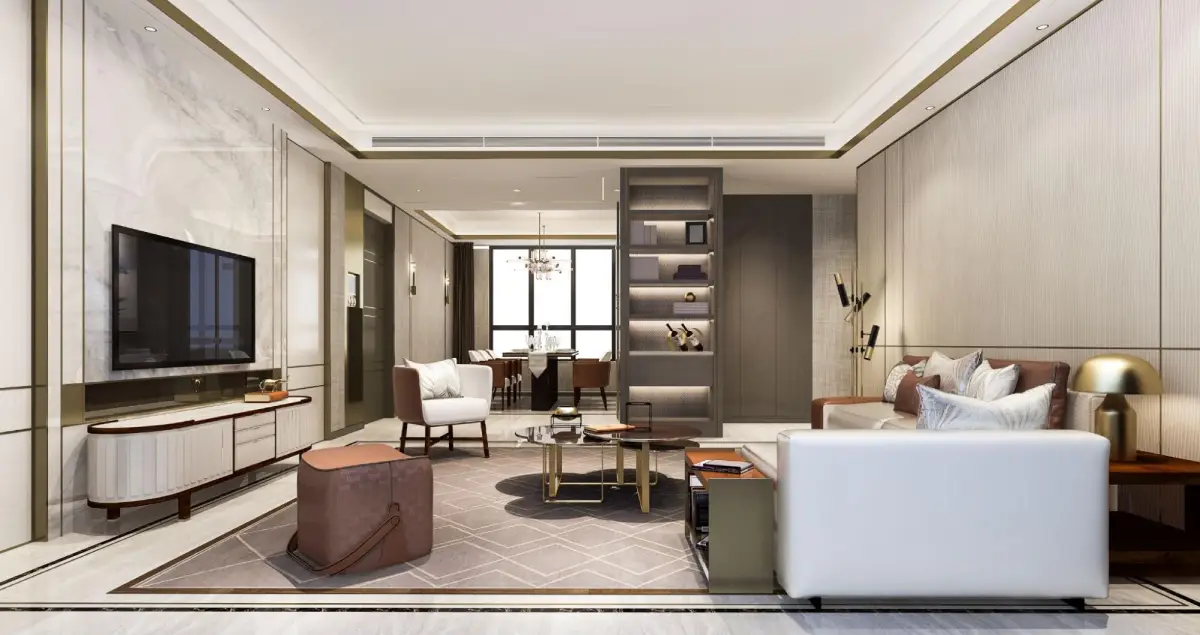
Interior design is one of the few aspects of home remodelling that can completely change a space. From selecting the perfect colour palette to arranging furniture in a way that maximises both function and aesthetics. interior design is the key to creating an inviting environment. In this blog post, we will explore the fundamentals of interior design, providing you with valuable insights and inspiration to enhance your living spaces.
One of the most influential aspects of interior design is colour. Different colours evoke various emotions and moods, making them powerful tools for creating desired atmospheres in a room. Warm colours like red and orange can add energy and vibrancy, while cool colours like blue and green promote relaxation and tranquillity. Neutral colours provide a timeless and versatile backdrop. Understanding colour psychology will enable you to make intentional choices that align with the desired ambience of your space.
Space planning is the art of arranging furniture and accessories to optimise functionality and flow within a room. Consider the purpose of the space and the activities that will take place there. Determine focal points and create pathways that allow for easy movement. A well-planned layout can enhance comfort and convenience, making the most of your available space.
Lighting plays a crucial role in interior design, impacting both the functionality and mood of a room. Natural light creates an open and inviting atmosphere, while artificial lighting can be used to highlight architectural features or specific areas. Understanding different lighting techniques, such as ambient, task, and accent lighting, allows you to create the desired ambience and functionality for each space.
Incorporating professional designers that use virtual reality architecture into the interior design process can revolutionise the way you visualise potential designs for your apartment. With virtual reality technology, you can step into a virtual representation of your space and experience different design concepts firsthand. This immersive experience allows you to make informed decisions, ensuring that the final design aligns with your vision and preferences.
Virtual reality architecture also enables designers to showcase their ideas more effectively. By immersing clients in a virtual environment, they can better understand spatial arrangements, material choices, and the overall atmosphere of the proposed design. This collaborative approach fosters a deeper level of communication and ensures that both the designer and the client are on the same page throughout the project.
Minimalism is a design style that embraces simplicity, clean lines, and a focus on essential elements. It promotes a sense of calm and clarity by eliminating excess and creating a clutter-free environment. Incorporating minimalistic design principles can make a small space feel more spacious and organised.
The eclectic design celebrates individuality and the blending of various styles, textures, and eras. It allows for creative expression and personalisation, combining elements from different cultures and periods to create a unique and visually appealing space. Embrace the unexpected and showcase your personality with an eclectic design approach.
Scandinavian design is characterised by its simplicity, functionality, and connection to nature. It emphasises natural materials, neutral colour palettes, and clean lines. By embracing simplicity and incorporating elements inspired by nature, you can create a warm and inviting Scandinavian-inspired interior.
Textures and fabrics add depth and visual interest to a room. Experiment with different textures, such as plush rugs, textured wallpapers, and tactile fabrics, to create a sensory experience. Incorporate fabrics that align with your desired style, whether it's luxurious velvet, crisp cotton, or earthy linen.
Artwork and accessories are the finishing touches that infuse personality and character into a space. Select pieces that resonate with you and complement the overall design. Art can be a focal point or serve as a conversation starter, while accessories, like throw pillows, vases, and candles, add layers of visual interest.
Bringing nature indoors through plants and greenery not only enhances the aesthetics of a space but also improves air quality and promotes a sense of well-being. Choose plants that thrive in the available light conditions and match your maintenance preferences. From small succulents to large statement plants, there are options to suit every space and style.
By immersing yourself in the world of interior design, you gain the power to transform your living spaces into personalised havens of beauty and functionality. exploring different styles will empower you to create spaces that reflect your unique taste and enhance your daily life.